
ADSORPTION-JOURNAL OF THE INTERNATIONAL ADSORPTION SOCIETY
Scope & Guideline
Advancing the Frontiers of Adsorption Science
Introduction
Aims and Scopes
- Adsorption Mechanisms and Theoretical Models:
The journal emphasizes research on the fundamental mechanisms of adsorption, including molecular dynamics and thermodynamic modeling, to understand how different materials interact with adsorbates. - Development of Novel Adsorbents:
A key focus is on the synthesis and characterization of new adsorbents, particularly those derived from sustainable materials or innovative composites, aimed at enhancing adsorption efficiency and selectivity. - Environmental Applications:
Research addressing the use of adsorbents for environmental remediation, including water purification and air quality improvement, is a significant area of interest, reflecting the journal's commitment to sustainability. - Industrial and Energy Applications:
The journal covers studies related to the application of adsorption technology in industrial processes, including gas separation, CO2 capture, and energy storage, highlighting practical implications and innovations. - Interdisciplinary Approaches:
The journal encourages interdisciplinary research, bridging chemistry, materials science, engineering, and environmental science to explore complex adsorption phenomena and their applications.
Trending and Emerging
- Sustainable and Green Adsorbents:
A significant trend is the development of eco-friendly adsorbents derived from biomass and waste materials, reflecting a growing commitment to sustainability and waste valorization in adsorption technology. - Machine Learning and Data-Driven Approaches:
The integration of machine learning and data-driven methodologies in predicting adsorption behavior and optimizing adsorbent design is increasingly prominent, showcasing the intersection of computational science and adsorption research. - Advanced Characterization Techniques:
Emerging research emphasizes the application of advanced characterization techniques, such as X-ray tomography and NMR, to gain deeper insights into the structures and dynamics of adsorbents at the molecular level. - Multi-Functional Materials:
There is a rising interest in the development of multifunctional materials that can serve dual purposes, such as adsorption and catalytic activity, indicating a trend towards multifunctionality in material design. - Hybrid Adsorption Technologies:
Research into hybrid systems that combine adsorption with other separation or filtration technologies is gaining momentum, reflecting the need for more efficient and integrated approaches to material separation and purification.
Declining or Waning
- Traditional Adsorbent Materials:
There has been a noticeable decline in research focused solely on traditional adsorbent materials such as activated carbon, as newer materials and composites gain popularity due to their enhanced performance and sustainability. - Basic Adsorption Isotherm Studies:
While foundational studies on adsorption isotherms remain important, there seems to be a waning interest in basic isotherm modeling without the integration of advanced computational techniques or practical applications. - Static Adsorption Studies:
Research focusing solely on static adsorption experiments without dynamic or field-scale implications appears to be decreasing, as the field moves towards more complex and realistic modeling of adsorption processes. - Single-Component Adsorption:
There is a shift away from studies that focus only on single-component adsorption processes, with a growing emphasis on multi-component systems that better reflect real-world applications.
Similar Journals

SEPARATION AND PURIFICATION TECHNOLOGY
Championing excellence in multidisciplinary separation studies.SEPARATION AND PURIFICATION TECHNOLOGY is a leading multidisciplinary journal published by Elsevier, focused on advancing the fields of Analytical Chemistry and Filtration and Separation. With its ISSN 1383-5866 and E-ISSN 1873-3794, this prestigious journal has achieved remarkable recognition, ranking in the top quartile (Q1) in both its categories, reflecting its substantial impact and relevance in the scientific community. Operating from its headquarters in Amsterdam, Netherlands, SEPARATION AND PURIFICATION TECHNOLOGY serves as a vital platform for researchers, professionals, and students to disseminate innovative findings and methodologies related to separation processes and purification techniques. The journal not only promotes open access research but also maintains a rigorous peer-review process to ensure high-quality publications. With a convergence period spanning from 1997 to 2025, it highlights the ongoing evolution and importance of separation technology in various applications, establishing it as an essential resource for those interested in cutting-edge advancements in analytical and chemical engineering domains.
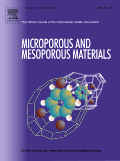
Microporous and Mesoporous Materials
Fostering Breakthroughs in Nanoscience and EngineeringMicroporous and Mesoporous Materials is a leading academic journal published by ELSEVIER, specializing in the field of porosity characterization and applications of microporous and mesoporous materials. With an impactful Q1 ranking in various categories, including Chemistry, Condensed Matter Physics, and Materials Science, this journal serves as a vital resource for researchers, professionals, and students focused on advancing the understanding and application of these materials. Established in 1998 and set to continue its influence until 2024, the journal's rigorous peer-review process ensures the dissemination of high-quality research findings. Additionally, its commitment to open access publishing broadens accessibility, fostering an inclusive community dedicated to innovation in nanoscience, materials physics, and engineering. The journal's Scopus rankings highlight its prestigious standing, placing it among the top percentile within pertinent fields. For those engaged in cutting-edge research or education within these sectors, Microporous and Mesoporous Materials remains an essential journal for current advancements and insights.

ADSORPTION SCIENCE & TECHNOLOGY
Unveiling Innovations in Adsorption PhenomenaADSORPTION SCIENCE & TECHNOLOGY, published by SAGE Publications Inc, is a pivotal journal in the fields of chemical engineering, chemistry, and surface science, recognized for its contribution to advancing research related to adsorption phenomena. With an impressive impact factor and ranked in the Q2 category in multiple scientific disciplines, this journal serves as a vital resource for researchers and professionals seeking to explore the theoretical and practical aspects of adsorption technology. Since transitioning to an open access model in 2017, it has enhanced accessibility for a global audience, fostering collaboration and disseminating innovative findings. The journal not only covers a wide array of topics from fundamental principles to applied technologies but also facilitates a platform for interdisciplinary discussions, playing a crucial role in shaping the future of materials science and chemical engineering. As a key outlet for the dissemination of high-quality research, ADSORPTION SCIENCE & TECHNOLOGY provides invaluable insights for students and professionals aiming to stay at the forefront of this dynamic field.

JOURNAL OF POROUS MATERIALS
Transforming Insights into Porous Material ApplicationsJOURNAL OF POROUS MATERIALS, published by SPRINGER, is an esteemed peer-reviewed journal in the field of materials science and engineering, with a particular focus on porous materials, their properties, and applications. Since its inception in 1995, this journal has become a pivotal platform for innovative research, offering a robust repository of knowledge with a timeline extending through to 2024. The journal is recognized for its influential contributions, as evidenced by its Q2 quartile ranking in both Materials Science and Mechanical Engineering categories, and its strong performance in Scopus rankings, placing it in the 71st percentile for Mechanical Engineering. Researchers and professionals in the field will find essential insights into the latest advancements and interdisciplinary approaches related to porous materials. While the journal operates under a subscription model, its reach and significance in advancing the understanding of porous materials make it a vital resource for academics and industry practitioners seeking to apply cutting-edge research to real-world challenges.
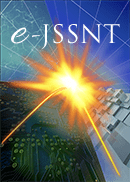
e-Journal of Surface Science and Nanotechnology
Exploring the Frontiers of Nanotechnology ResearchThe e-Journal of Surface Science and Nanotechnology, published by the SURFACE SCI SOC JAPAN, stands as a pivotal platform for the dissemination of groundbreaking research in the fields of surface science and nanotechnology. With an ISSN of 1348-0391 and a commitment to open access publication since 2003, this journal ensures that innovative findings are accessible to a global audience, fostering collaboration among researchers, professionals, and students. The journal spans a wide array of disciplines, as evidenced by its 2023 category quartiles, which include Q3 rankings in Biotechnology and Mechanics of Materials, as well as Q4 standings in Bioengineering, Condensed Matter Physics, and various surface-related fields. This diverse scope makes it an essential resource for those engaged in advanced scientific research and applications. The journal’s unique position within its categories—Ranging from Q3 to Q4 in various Scopus rankings—highlights its niche yet vital contribution to advancing knowledge in both fundamental and applied sciences. By continually converging from 2005 to 2024, the e-Journal of Surface Science and Nanotechnology embodies the integration of innovative studies and novel applications that drive the future of material sciences.

HEAT AND MASS TRANSFER
Exploring the dynamics of heat and mass transfer.HEAT AND MASS TRANSFER is a prestigious peer-reviewed journal published by Springer, dedicated to advancing the understanding of thermal and mass transfer phenomena in various physical and engineering contexts. With an ISSN of 0947-7411 and an E-ISSN of 1432-1181, this journal has established itself as a key platform for researchers and professionals in the fields of Condensed Matter Physics and Chemical Engineering, achieving a commendable Q2 ranking in both categories as of 2023. The journal also holds impressive positions on Scopus, being ranked #147 out of 434 in Condensed Matter Physics and #33 out of 96 in Fluid Flow and Transfer Processes, both in the 66th percentile. Covering innovative research and practical applications from its inception in 1995 through to 2024, HEAT AND MASS TRANSFER is crucial for those aiming to deepen their knowledge and stay updated on the latest advancements in heat and mass transfer research. While the journal does not offer open access, its rigorous content is essential for researchers seeking to contribute to and benefit from scholarly discourse in this vital area of science.

Bulletin of Chemical Reaction Engineering and Catalysis
Advancing the Frontiers of Chemical Engineering and CatalysisBulletin of Chemical Reaction Engineering and Catalysis is a distinguished open-access journal published by UNIV DIPONEGORO, focusing on pivotal advancements in the fields of chemical reaction engineering and catalysis. Since its inception in 2008, this journal has served as a vital platform for disseminating cutting-edge research, catering to a diverse readership that includes researchers, professionals, and students in chemical engineering and related disciplines. With its dedication to publishing valuable insights, the journal has been indexed in Scopus and boasts respectable rankings across various categories, including Q3 in Chemical Engineering (miscellaneous) and Q4 in Catalysis as of 2023. It continues to foster scholarly dialogue and collaboration by providing an accessible means for contributors to share their findings. Operating from Semarang, Indonesia, this journal underscores its commitment to advancing knowledge in chemical sciences, making it an essential resource for those engaged in the study and application of chemical processes.
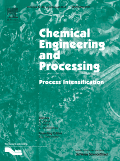
Chemical Engineering and Processing-Process Intensification
Driving Innovation in Process IntensificationChemical Engineering and Processing - Process Intensification is a leading journal published by Elsevier Science SA, specializing in the multifaceted domain of chemical engineering. With the ISSN 0255-2701 and E-ISSN 1873-3204, this journal stands as a beacon of knowledge, facilitating the dissemination of innovative research from 1984 onwards and continuing through 2024. Renowned for its rigorous peer-review process, it boasts a distinguished reputation, reflected in its top-tier rankings within several fields: Q1 in Chemical Engineering (Miscellaneous), Q2 in Chemistry, and Q1 in Industrial and Manufacturing Engineering. This journal focuses on the advancements in process intensification, which are crucial for optimizing efficiency and sustainability in chemical processes. Although access is not open, the journal serves as an essential resource for researchers, professionals, and students alike who seek to advance their understanding and contribute to the evolving landscape of chemical engineering and process technology. Join a community of innovators driving the future of process engineering through impactful and cutting-edge research.
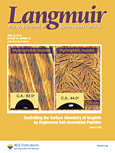
LANGMUIR
Elevating Academic Standards in Chemical ResearchLANGMUIR is a prominent peer-reviewed journal published by the American Chemical Society, serving as a vital platform for research in various fields, including condensed matter physics, materials science, electrochemistry, and spectroscopy. With an ISSN of 0743-7463 and an E-ISSN of 1520-5827, this journal has established itself as a reputable source of cutting-edge scientific findings since its inception in 1985. Recognized for its rigorous academic standards, LANGMUIR holds significant ranking positions, including Q1 in condensed matter physics and spectroscopy, and Q2 categories in electrochemistry and materials science, reflecting its impactful contributions to these disciplines. Although the journal does not currently offer open access, it continues to foster collaboration and discussion among researchers by publishing high-quality articles that explore the frontiers of chemistry and physics. By engaging with LANGMUIR, readers can stay informed about the latest advances in surface and interface science, making it an essential resource for professionals, researchers, and students dedicated to these fields.
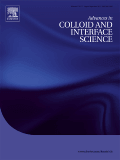
ADVANCES IN COLLOID AND INTERFACE SCIENCE
Advancing Understanding of Interfacial PhenomenaADVANCES IN COLLOID AND INTERFACE SCIENCE, published by Elsevier, stands as a premier journal in the disciplines of colloid and interface science, with an esteemed impact factor reflecting its influential research contributions. As a leader in its field, it holds an impressive Q1 ranking across multiple categories, including Colloid and Surface Chemistry, Physical and Theoretical Chemistry, as well as Surfaces and Interfaces. Established in 1967 and continuing its legacy through 2024, the journal provides a vital platform for dissemination of innovative findings and techniques in colloidal systems and interfacial phenomena. Researchers and professionals engaged in these areas will find a wealth of insights and advancements, given its high percentile rankings in Scopus that underscore its significance in both chemistry and physics. While the journal maintains a subscription-based model, it remains an essential resource for anyone looking to deepen their understanding of the complex interactions defining modern materials science.